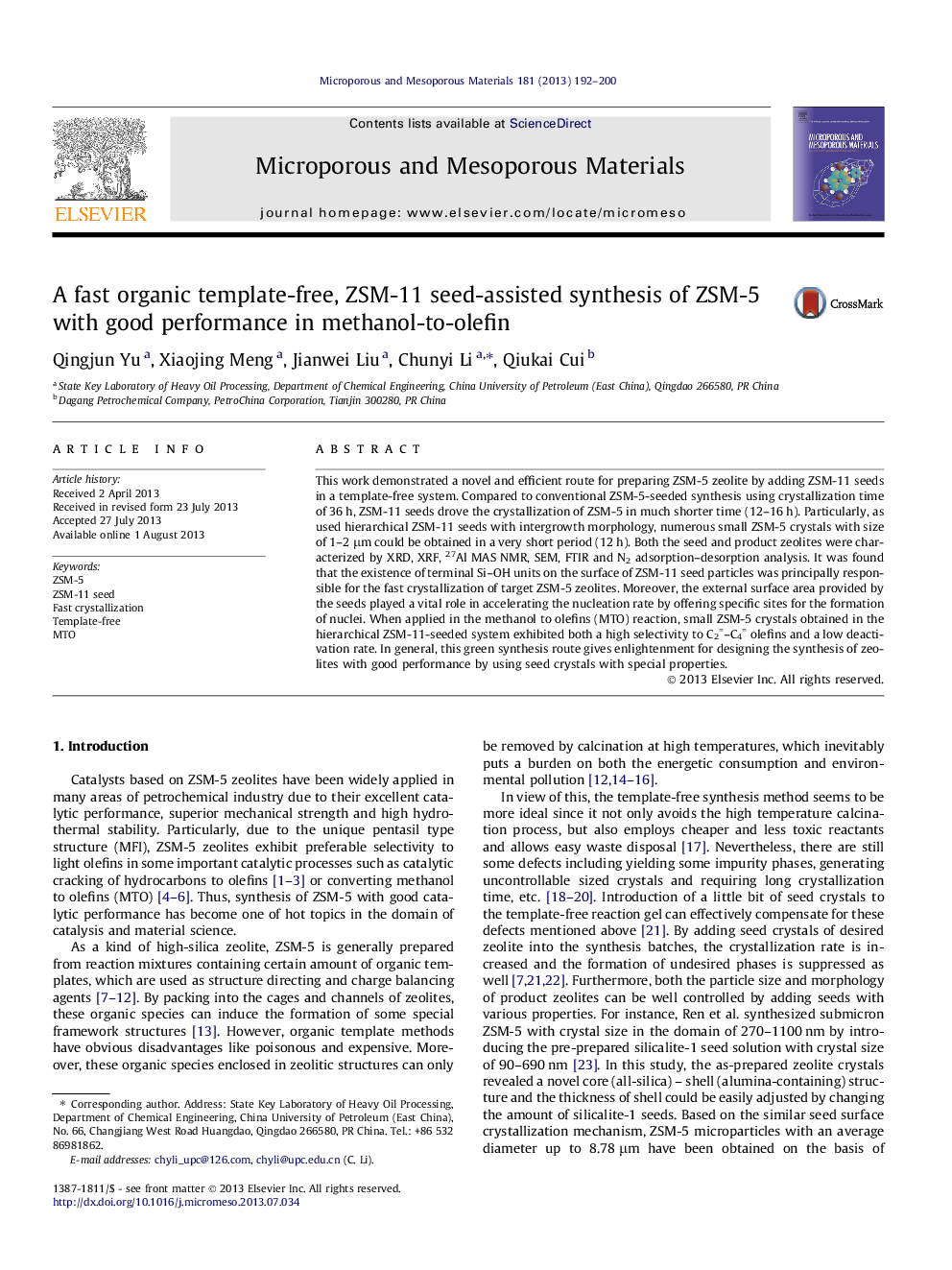| Article ID | Journal | Published Year | Pages | File Type |
|---|---|---|---|---|
| 73351 | Microporous and Mesoporous Materials | 2013 | 9 Pages |
•ZSM-5 crystals were prepared by using ZSM-11 as seeds in a template-free system.•ZSM-11 seed drove the crystallization of ZSM-5 at a much faster rate than ZSM-5 seed.•Hierarchical ZSM-11 impelled formation of numerous small ZSM-5 crystals in a short period.•Small ZSM-5 crystals exhibited a high selectivity to C2=–C4= olefins in MTO.•Small ZSM-5 crystals presented a low deactivation rate in MTO.
This work demonstrated a novel and efficient route for preparing ZSM-5 zeolite by adding ZSM-11 seeds in a template-free system. Compared to conventional ZSM-5-seeded synthesis using crystallization time of 36 h, ZSM-11 seeds drove the crystallization of ZSM-5 in much shorter time (12–16 h). Particularly, as used hierarchical ZSM-11 seeds with intergrowth morphology, numerous small ZSM-5 crystals with size of 1–2 μm could be obtained in a very short period (12 h). Both the seed and product zeolites were characterized by XRD, XRF, 27Al MAS NMR, SEM, FTIR and N2 adsorption–desorption analysis. It was found that the existence of terminal Si–OH units on the surface of ZSM-11 seed particles was principally responsible for the fast crystallization of target ZSM-5 zeolites. Moreover, the external surface area provided by the seeds played a vital role in accelerating the nucleation rate by offering specific sites for the formation of nuclei. When applied in the methanol to olefins (MTO) reaction, small ZSM-5 crystals obtained in the hierarchical ZSM-11-seeded system exhibited both a high selectivity to C2=–C4= olefins and a low deactivation rate. In general, this green synthesis route gives enlightenment for designing the synthesis of zeolites with good performance by using seed crystals with special properties.
Graphical abstractFigure optionsDownload full-size imageDownload as PowerPoint slide
